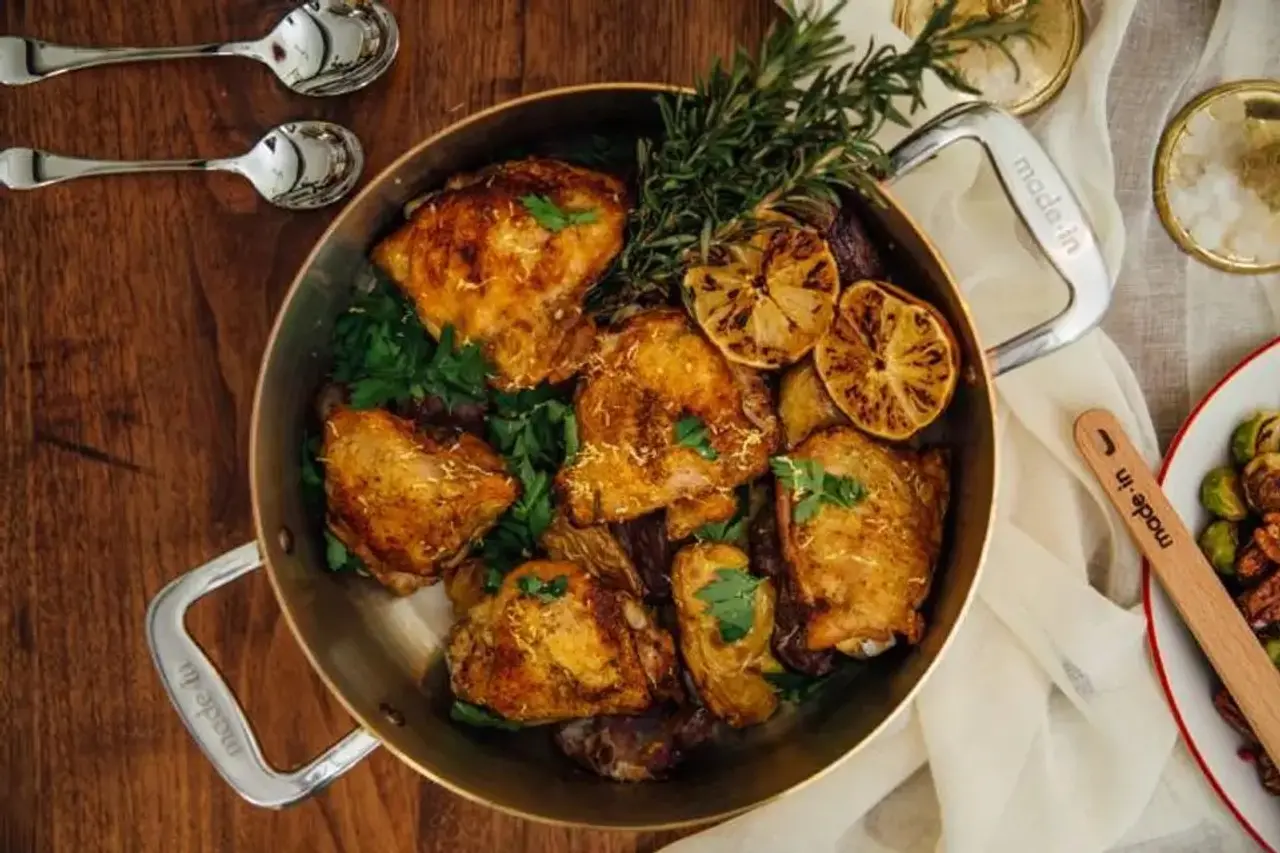There's nothing quite like the warm glow inside a kitchen with a pan rack strung with glimmering copper pans in all shapes and sizes. Their vintage appeal and sunset sparkle simply dazzle. Plus, copper is a highly conductive material. In other words, copper pans heat up and cool down quickly. Everyone can appreciate the beauty and functionality of copper cookware, but are copper pots and pans safe for cooking? Copper, after all, is a reactive metal.
When exposed to oxygen (i.e. the air), copper can break down over time. When exposed to acids (i.e. acidic foods like tomatoes and citrus) the metal can leach into the food, contaminating it. Although it's beautiful to look at and it efficiently conducts heat, copper is toxic when ingested. So, you don't want even trace amounts to get into your food.
Are Copper Pans Safe?
Yes, copper is a reactive metal, but that doesn't mean all pieces of copper cookware are unfit for our modern kitchens. Whether or not it's safe to cook with copper depends on the type of copper pan, and there are two:
1. Uncoated or Unlined Copper Cookware
Pots and pans considered to be unlined copper cookware are those that are copper on both the inner and outer surfaces. These pans can leach copper into food during the cooking process, making them unsafe to use.
Eating one meal prepared in an unlined copper pan likely won't make you immediately sick. However, copper is poisonous and will accumulate in your system, leading to copper toxicity or copper poisoning.
The same goes for unlined copper vessels, too. These containers look pretty on the countertops, but they are not safe for food storage and should only be used to store non-food items.
2. Coated or Lined Copper Cookware
This second type of copper cookware is safe to cook with because they are lined with non-reactive, food-safe metals like stainless steel or tin. These pans look just as pretty on the outside, but they're completely safe for cooking on the inside. The metal lining creates a barrier between your food and the copper, protecting the food from leached metals and preventing you (and your dinner party guests) from getting copper poisoning.
With lined copper cookware, chefs enjoy the best of both worlds: toxin-free food and the benefit of pans that heat quickly thanks to the highly conductive copper.
How to Cook Safely with Lined Copper Pots and Pans (4 Tips)
1. Purchase High-Quality Lined Pans
When you're sitting down to enjoy a pleasant meal with your friends and family, the last thing you want to worry about is whether or your cooking tools are safe. Save yourself the stress and purchase high-quality lined copper pans that have been sturdily constructed.
2. Use Gentle Cooking Utensils
To preserve the life of your copper pans, use tools that aren't likely to scratch the protective stainless steel or tin lining inside your copper cookware. Choose wooden or silicone spatulas and serving spoons instead of hard plastic or metal.
3. Hand-Wash
Washing your copper cookware by hand rather than in the dishwasher will be gentler on the lining and increase their longevity. Use a mild detergent and warm water to clean your pans right after use.
4. Know When to Replace or Resurface
If the lining inside your copper cookware is scratched, dinged up, or otherwise damaged, then the pots and pans are sadly no longer safe to use. If lined with tin, you can look for a repair company that will reline the pan with new tin. Pans lined with stainless steel cannot be repaired. They'll need to be upcycled (into pretty kitchen art, perhaps) and replaced.
Forget about Safety (for a Moment) and Preserve the Luster of Your Copper Pans
Now, you know how to safely use copper cookware. Let's take a moment to appreciate their real appeal, their aesthetics, and talk about how you can keep the copper parts of your lined pans looking luminous for years.
You can purchase a fancy copper polish from the store, or you can mix your own with ingredients you probably already have on hand. You'll need lemon juice or white vinegar, baking soda, and a soft cloth.
To start, clean your pans with warm soap and water. Then mix up your homemade polish by combining baking soda with the lemon or vinegar. Use a soft cloth to polish the copper surfaces with the mixture, rubbing in a circular motion.
Expert Tip: If you don't have vinegar, lemon, or baking soda in your pantry, don't sweat it! You can use plain, old ketchup (or catsup, if that's how you roll) to polish the tarnish away.
When you're finished polishing, simply rinse, dry, and get ready to enjoy years of burnished beauty in your copper-filled kitchen.























